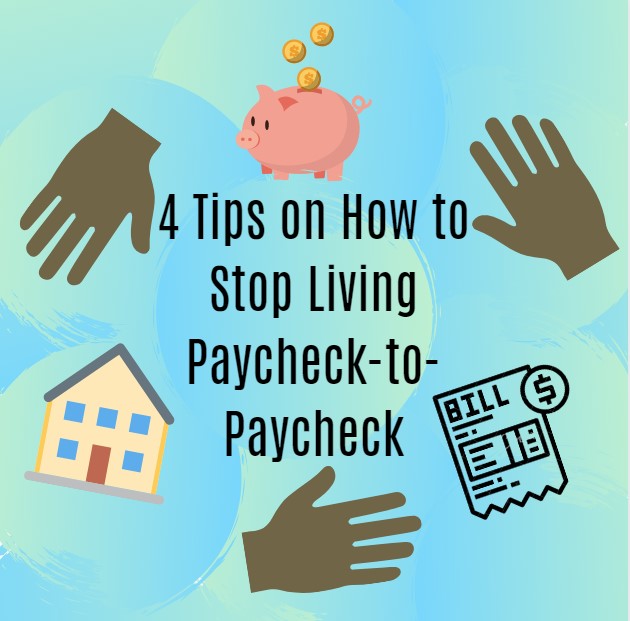Living paycheck-to-paycheck is much like riding a roller coaster – you experience the elation and relief at the beginning of the month, only to be followed by worry and stress by the end of the month. Unfortunately, for many, this ride simply repeats itself, month after month, year after year.
Are you ready to ditch the roller coaster ride and experience financial stability instead?
4 Tips on How to Stop Living Paycheck-to-Paycheck
Here are a few simple ways you can get started.
Map out your financial obligations and current spending habits.
If someone were to ask you how much your financial obligations cost each month, you’d likely be able to give a rather accurate ballpark figure. But if you don’t have a firm grasp on exactly how much your bills are – including expenses you don’t necessarily pay monthly, like insurance – you don’t actually know how much discretionary income is at your disposal.
If you don’t know how much discretionary income you have, chances are your spending is inching past what your finances can actually handle.
Before you can jump off the paycheck-to-paycheck roller coaster, you need to understand why you are there in the first place.
So first things first: write down every financial obligation you have.
Include variable expenses and non-monthly expenses, divided by 12 in order to understand how much you should reserve for these bills each month.
Now look at your discretionary spending for the last month, two months, three months.
How does this number, plus your bills, compare to your income?
Consider every bill to be on the chopping block.
Yes, food and shelter are necessities; but how much you spend on them is up for discussion.
If your grocery bill is high by itself and you compound it by eating out three times a week, there is definitely some trimming to be done.
As painful as it may seem, go through each line of your bills – including those pesky monthly subscriptions that can quickly go unnoticed – and consider whether something can be cut or reduced — temporarily or permanently.
Before you classify this in your mind as deprivation, consider this: every cut you make is creating a buffer between you and the end of your month.
In turn, this will lessen your stress levels and allow your finances to become much more manageable. You are, in essence, exchanging these non-essentials for peace of mind – and that is worth far more than money.
Make sure to add one, non-negotiable line item to your budget.
It might seem contradictory to add another financial obligation to your list when we just went through and reduced or eliminated so many others. But this one line item is the only way to reach financial stability: your savings.
If, in the past, you considered savings to be where all your “leftover” money should go, now is the time to shift your thinking.
Savings is a bill, one to be paid at the beginning of the month alongside your mortgage and electricity.
This bill is one you are essentially paying to yourself in order to cushion the blow should unexpected expenses occur and pay for the type of future you want – instead of just accepting the one that is handed to you.
Making room for this expense might mean becoming accustomed to living on 10 percent less than what your income dictates you have. However, treating it as an essential, both in thinking and action, will be the real ticket off the paycheck-to-paycheck roller coaster.
Track your spending.
If you breathe easy at the beginning of the month, and still feel relatively stable mid-month, only to be hit with the harsh reality of your bank account balance by the end of the month, there’s one thing you just aren’t doing: tracking your spending. And by tracking your spending, I mean where each and every dollar goes.
Without tracking your spending throughout the entire month, chances are you aren’t making adjustments to make sure your paycheck can easily cover you until months end. This type of ignorance certainly isn’t bliss – it is simply a ticking time bomb waiting to pull you back to reality.
Some rely on the envelope system to serve as a visual reminder of how much is left for certain expenses before they are replenished. Others find apps extremely helpful for sending spending reminders or capping spending at a certain level each day.
However you decide to do it, tracking your spending is just another non-negotiable – even after you manage to reach financial stability.


[…] income. This kind of dramatic change in your income means you will need to reevaluate your budget. The main goal of this new budget is to ensure you’re spending as little as possible while still […]